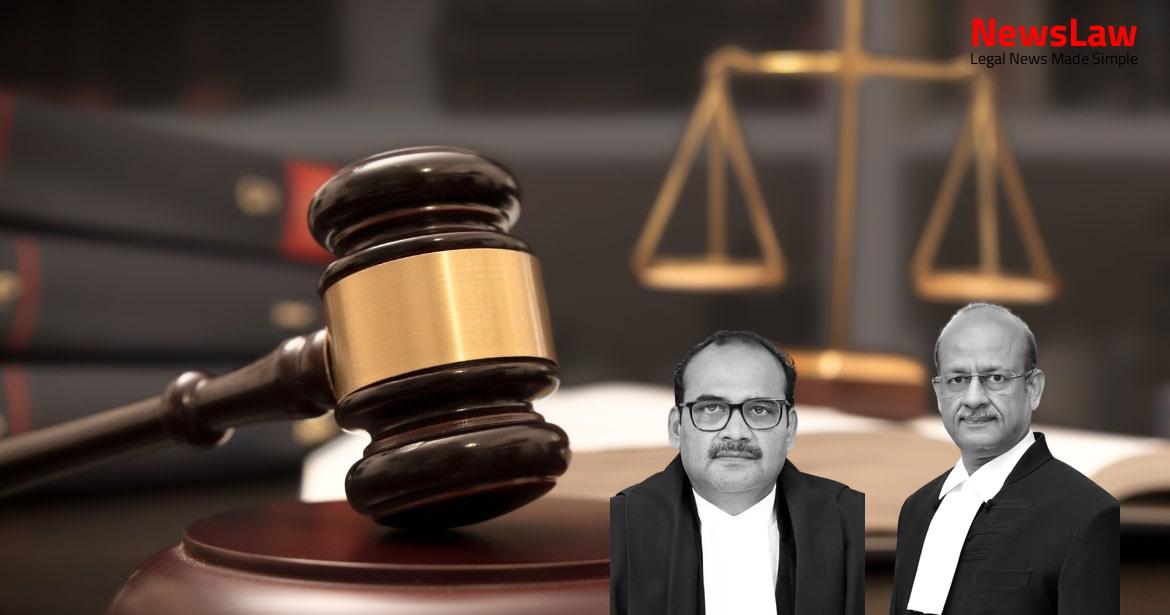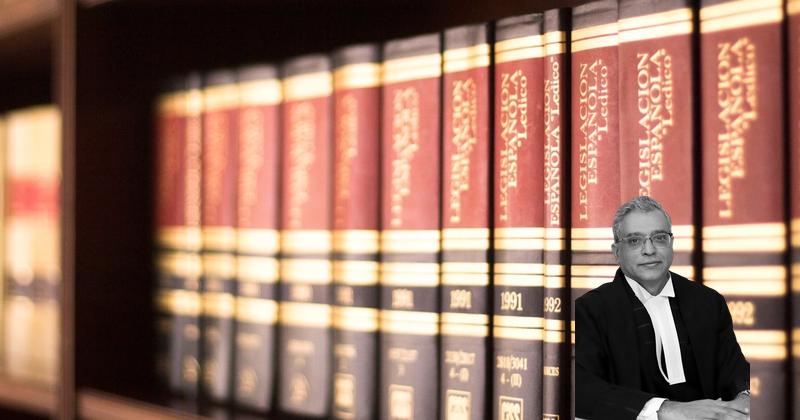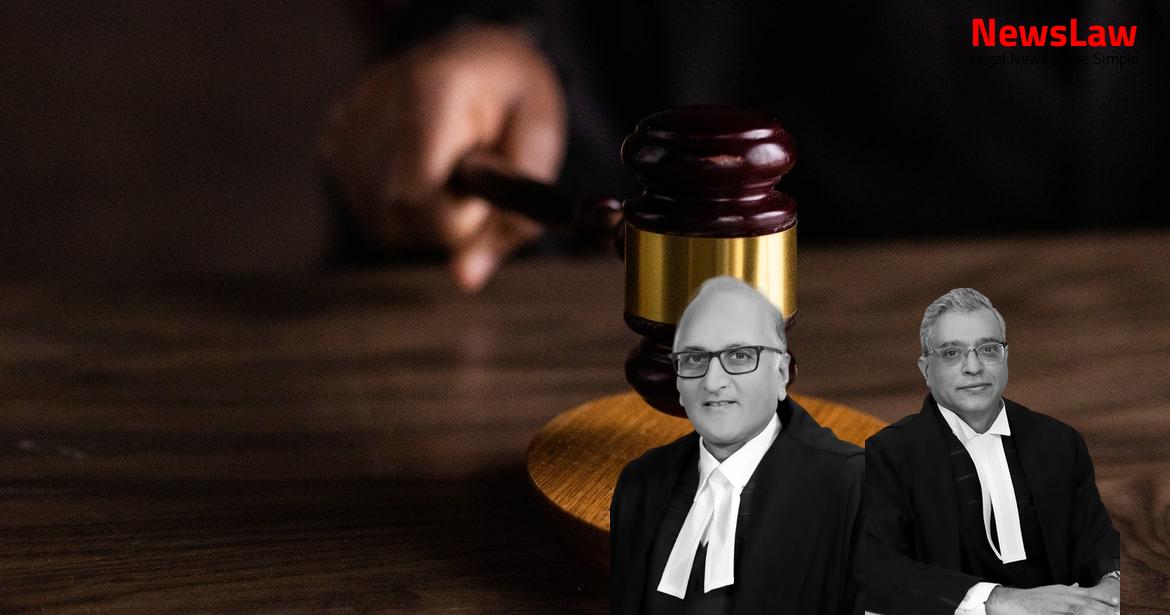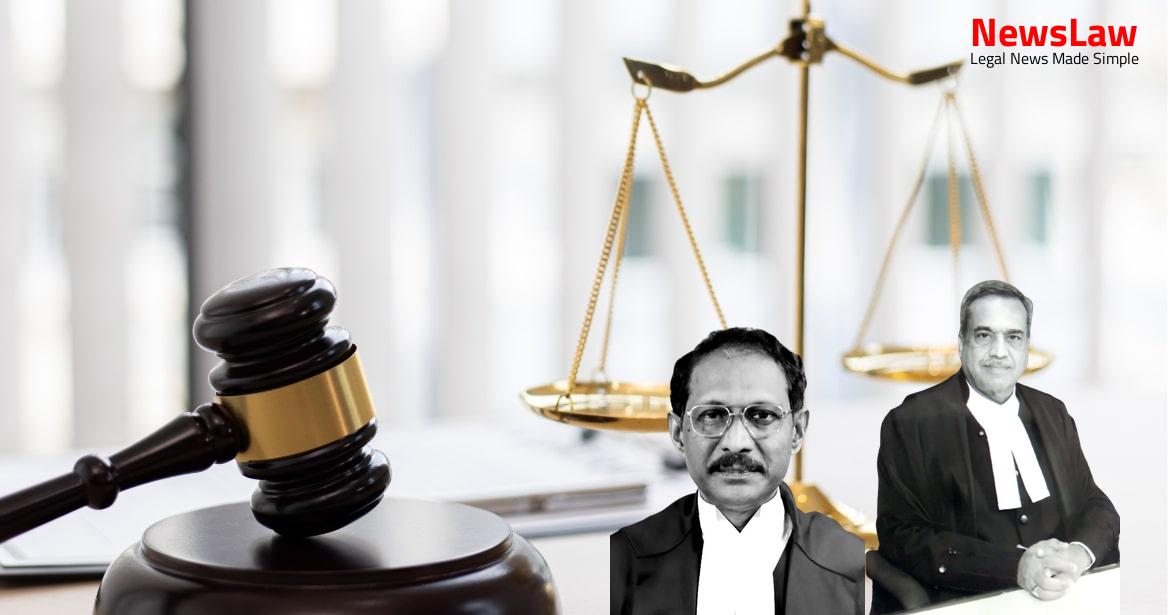In a recent landmark judgment by the Supreme Court of India, the case of establishing a matrimonial relationship between Padminibai and Defendant No. 1 has been thoroughly examined. The Court’s decision holds importance in resolving disputes regarding marital status and inheritance rights. The judgment sheds light on the complexity of proving matrimonial relations in legal proceedings. Let’s delve into the details of this significant case.
Facts
- The Trial Court decreed the suit in favor of the appellant/plaintiff.
- 1/5 share was directed to be granted to the appellant/plaintiff.
- The appellant/plaintiff claimed that there was a marriage between his mother Padminibai and the defendant no. 1.
- The appellant/plaintiff asserted that he was born from the wedlock between Padminibai and defendant no. 1.
- The First Appellate Court upheld the judgment and decree of the Trial Court.
- The appellant, aged 35 years at the time of filing the suit, sought partition and separate possession of the suit property.
- Aggrieved by the High Court’s judgment, the appellant is now in appeal before this Court.
- The appellant filed the suit based on his claim of being born from the marriage between Padminibai and defendant no. 1.
- The Trial Court and First Appellate Court confirmed appellant’s case about the marriage of the appellant/plaintiff’s mother with Padminibai.
- They found that the appellant/plaintiff was born from that marriage.
- However, the High Court overturned the decisions of the lower courts and dismissed the suit filed by the appellant/plaintiff.
- The findings of the High Court need to be set aside as they deviated from the established facts presented by the appellant/plaintiff.
Also Read: Resolution of Anomalous Situation: S.C. Bhalla v. Co-sharers 15 to 19
Arguments
- Learned counsel for the appellant argued that the High Court should not have re-evaluated the evidence presented by both parties during the second appeal.
- The contention was that the High Court exceeded its role by delving into the re-appreciation of evidence.
- The learned counsel for the appellant asserted that the High Court’s involvement in re-evaluating evidence was inappropriate in the context of a second appeal.
Also Read: Cancellation of Bail for Abdullah, Nasir, and Muzammil in Murder Case of Khursheed Ahmad
Analysis
- The suit was filed 16-17 years after the appellant attained majority with no previous claims against the defendant.
- No substantial evidence of the marriage between the appellant’s alleged parents was presented.
- Key witness Padminibai, the supposed mother, was not produced to support the appellant’s case.
- High Court noted discrepancies in the evidence provided by the appellant.
- Padminibai had remarried after being allegedly abandoned by the defendant, raising questions about the previous marriage.
- The appellant failed to establish any matrimonial relations between the alleged parents or whether there was a divorce before the mother remarried.
- Appellant was unable to prove his claim of being the son of the defendant through his marriage with Padminibai.
- The burden of proof was heavy on the appellant, given the denial of the marriage by the defendant.
- Evidence provided by the appellant did not meet the burden of proof required.
- The High Court rightly reversed the findings of the Trial Court and the First Appellate Court as being perverse.
- The present appeal lacks merit and is dismissed.
- No order is given as to costs.
Case Title: RAM @ RAMDAS SHESHRAO NEHARKAR Vs. SHESHRAO BABURAO NEHARKAR . (2024 INSC 498)
Case Number: C.A. No.-005038-005038 – 2012



